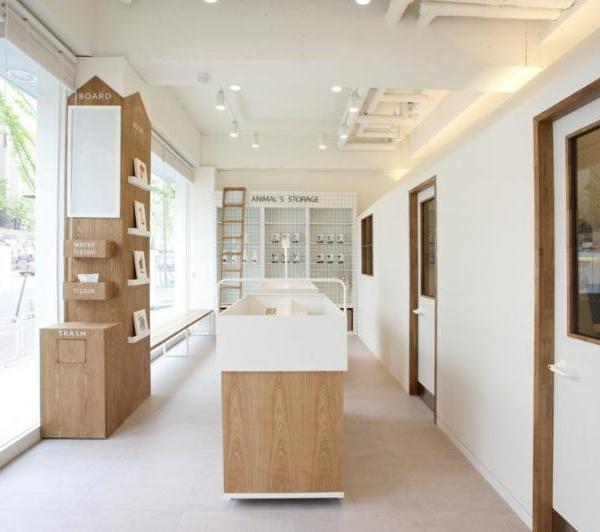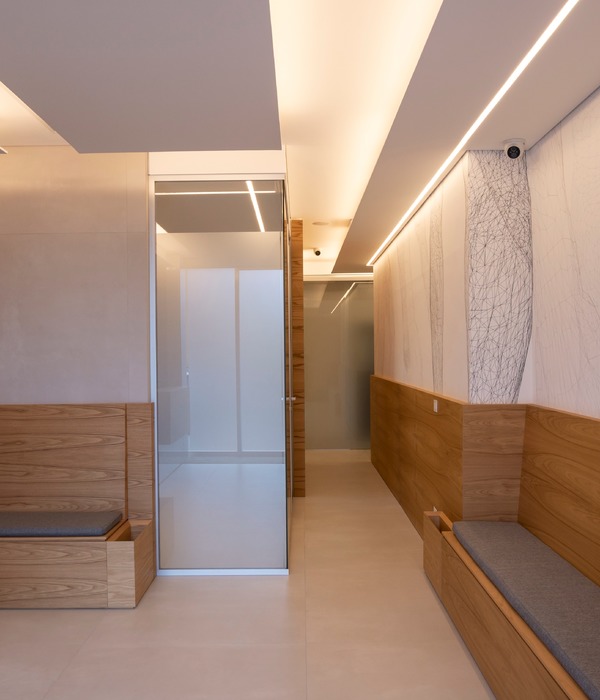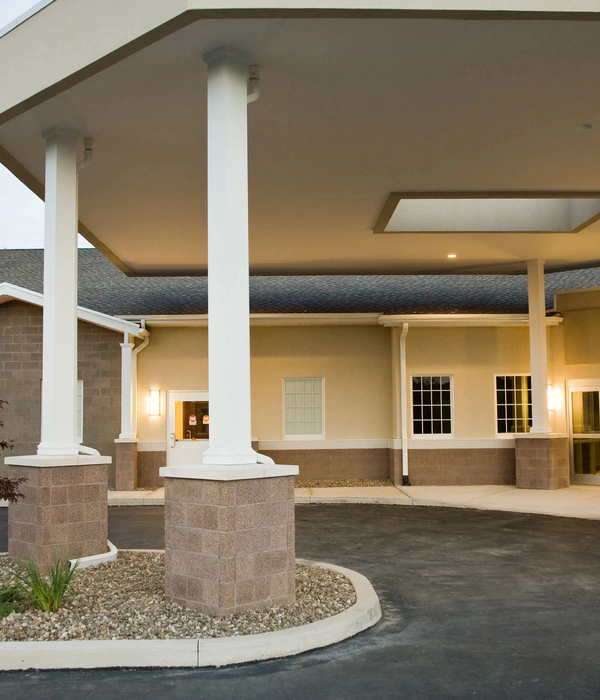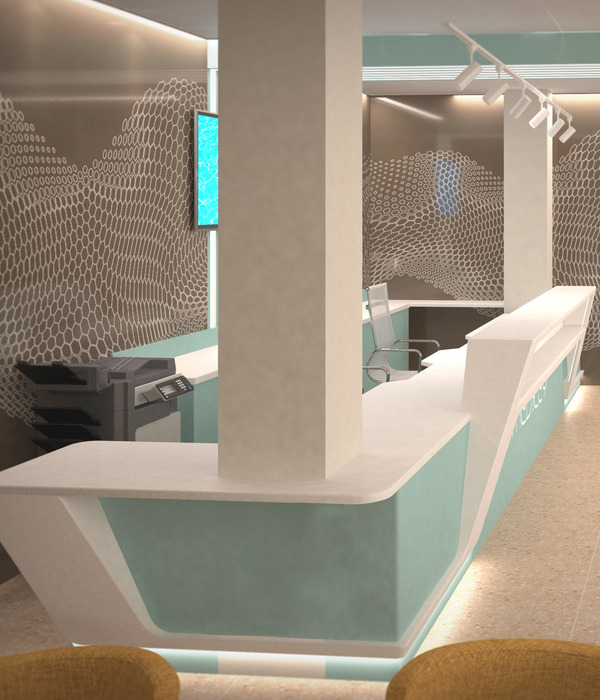The design for “Gardens” has its background in contemporary research that indicates elderly people’s well-being in care centers is strongly correlated with attractive green outdoor environments and social interaction. Therefore, important parameters in our spatial design were to arrange comfortable homes for the elderly with easy access to their own gardens, outdoor spaces, and shared facilities.
We mean that this way of organizing interior spaces for the elderly is essential for dynamic social interaction between residents, staff, relatives, and others. The facades facing the atrium courtyards have robust and durable wood paneling which is low-maintenance and has a low environmental impact. This together with different landscape arrangements of trees, water, and plants in the courtyards creates an intimate and gentle atmosphere with engaging qualities.
The exterior of the building faces large-scale local industrial buildings, forests, and agricultural landscapes and is covered with fiber cement patterns. The pattern has different colors and shades corresponding with the bright tones of the surrounding green fields. The facade's expression resembles a textile cross stitch embroidered border that runs around the building.
The care center, therefore, has an exterior with a clear identity in a diversified environment and a monastery-like inner organization with tactile and sensible atrium courtyards. The building's unique profile in an ordinary everyday context makes the architectural design a symbol of an attractive and safe living environment for the elderly.
{{item.text_origin}}












